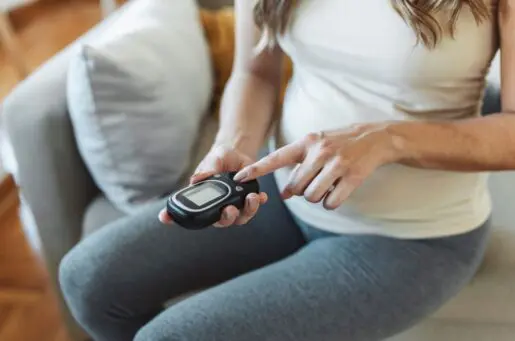Bioethics Forum Essay
“Beware the Ides of March” 2.0
The ancients looked to omens and portents to recognize signs of impending death. Today we do not rely on the ominous words of soothsayers, interpreting the entrails of chickens, or the appearance of owls to discern the odds of someone dying. We are more rational and sophisticated. We believe that computers hold the secrets of life and death – if only we could enter the right data and perform the right calculations.
Armed with precise information, doctors would be able to answer with certainty the perennial question “How long do I have, Doc?” They would be able to recommend only those treatments or screening interventions that make sense within the allotted time period. Patients would then be able to make and implement rational plans for the time they have left, whether that is a month, a year, or 10 or 20 years. We would be in control of our destiny, or in bioethics terms, able to exercise our full autonomy. Or so the theory goes.
In reality there is no Holy Grail of Prognosis – a single index that incorporates all important variables – and yet the search goes on. The field has been given a boost with a recent synthesis of existing prognostic indices for older adults, published in the Journal of the American Medical Association, and a Web site, ePrognosis.org, developed by the same authors, that allows the user to access the indices. The authors – Lindsey C. Yourman, an internal medicine resident at Scripps Mercy Hospital in San Diego, and colleagues from the University of California, San Francisco, and Beth Israel Deaconess Medical Center in Boston – say, “Failing to consider a prognosis in the context of clinical decision-making can lead to poor care.”
For their study the authors identified a total of 16 indices that predict risk of mortality from six months to five years: six indices for older adults still living in the community, two for nursing home residents, and eight for hospital patients. The authors acknowledge that all the indices have biases and that only two have been independently evaluated. They conclude that “future studies are needed to test their accuracy in heterogeneous populations, and their ability to improve clinical outcomes before their widespread use can be recommended.”
An editorial in the same issue of the Journal of the American Medical Association by Thomas Gill, MD, agrees that the indices are not ready for prime time. He points out that current indices omit certain comorbid conditions and genetic risk factors, as well as some variables that may be protective, such as social support. “Despite the proliferation of prognostic indices for mortality, there is currently no evidence that their routine use improves patient outcomes,” he states. Like the authors of the article, he urges further research.
With all these caveats, what is the appropriate use of ePrognosis other than as a research tool? With high levels of skill, experience, and judgment, clinicians can use it as an adjunct to other information about a particular patient at a particular stage of illness. But what about the average person who has (or doesn’t have) a serious illness? The Web site is available to anyone who claims to be a health care professional. The ethics of encouraging people to lie about their identity aside, is ePrognosis a good life-planning tool?
The responses to an article in the New York Times and a post in the New York Times’ “New Old Age” blog suggest that most people are, at the very least, curious and willing to give the tools a try. Many of the people who responded were in their 70s or older but not seriously ill. Many were enthusiastic about the availability of the tool; others not so much. Many recounted stories of relatives who lived years beyond their expected death, and others who died without warning. One man said that according to the indices he had been dead for five years.
A firm advocate for patients’ and their family caregivers’ rights to medical information, I am nonetheless wary about putting too much faith in a Web site, especially if there is no immediate decision to make, such as enrolling in hospice (which requires a life expectancy of six months or less). There are too many variables not captured in any current index, and probably not in any other index available soon. Life plans are at best broad goals. Those of us who have experienced unexpected life-changing illnesses, accidents, losses, or other traumatic events know how elusive these goals can be and how diverse are individual life choices.
The idea that people will alter their entire life course based on a prognostic index seems unrealistic. “What would you do if you only had a week to live?” may be an interesting exercise, but not much good for identifying a course of action. Will a bad score on ePrognosis encourage people to discuss advance directives and name a health care proxy? Perhaps, but those who avoid these actions are unlikely to be moved by statistics. The assumption that people will forego expensive and nonbeneficial treatments if they know they have a year or two to live may not be true for all. Even when the likelihood of imminent death is clear to everyone, some patients and families opt for “everything” to be done.
The real problem lies outside the realm of prognostic indices. Better prognostic indicators will not change financial incentives or practice patterns to provide more treatments. Physicians today have a wealth of information about consistent predictors of mortality, including comorbidity and functional status, and yet they are reluctant to discuss the possibility of death with patients. The primary reason that patients are referred to hospice so late is not that doctors don’t know the patient is dying but that they are reluctant to discuss the option.
For now, my suggestion is that ePrognosis is best used with a warning: “Do not try this at home. If you do and experience severe anxiety or contemplate drastic life changes, consult your physician right away.”
Carol Levine is director of the Families and Health Care Project of the United Hospital Fund and a Hastings Center Fellow.
Posted by Susan Gilbert at 01/18/2012 02:30:39 PM |












